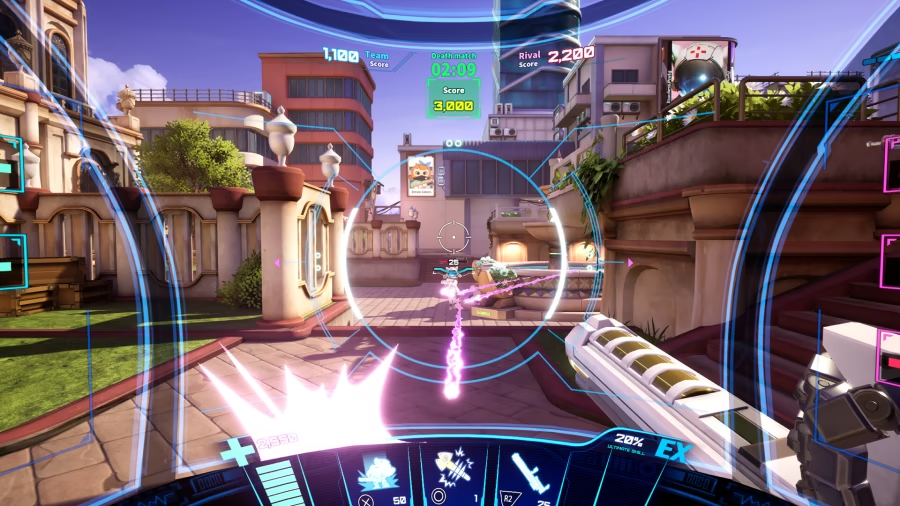Overwatch 2: Aim, Alt Accounts, and All That Jazz
Highlights
- In the thrilling world of Overwatch 2, players must find the perfect balance between window size and aim assist to improve their aim and overcome challenges.
- While aim is important, success in Overwatch 2 also depends on developing game sense, mastering positioning, and fostering effective teamwork.
- Understanding the volatility of SR placement and managing expectations can help players navigate the enigma of rank disparities between different accounts.
In the thrilling world of Overwatch 2, where heroes clash and aim is everything, one player finds themselves in a perplexing situation. With aching hands and a humble gaming history, they seek answers to the mysteries of settings, aim, and the elusive correlation between window size and assisted aim ease. Fear not, fellow Overwatch enthusiasts, for we are here to dive deep into the secrets of Overwatch 2 and uncover the solutions to these perplexing challenges.

When it comes to finding the perfect balance between window size and aim assist, precision is key. Seasoned players suggest keeping the window size around 20-30% to ensure that aim assist doesn't drag too much. But that's not all! Adjusting sensitivity to achieve a comfortable maximum speed is equally important. Aim smoothing should be gradually adjusted, starting high and reducing it until it feels just right. And let's not forget about aim ease in, which should be fine-tuned by starting low and gradually increasing it until it feels smooth and natural. These adjustments can work wonders in improving aim and alleviating the frustrations that often arise during intense battles.
However, it's crucial to remember that aim alone is not the sole determinant of success in Overwatch 2. As one skilled player points out, they managed to climb to Masters across all roles despite having average aim on PC. Why, you may ask? Well, in the lower ranks like Gold, mistakes are often not punished as severely as they are in higher ranks like Platinum. As players progress, opponents become more adept at recognizing and capitalizing on errors. So, while honing your aim is undoubtedly valuable, it's equally important to focus on developing game sense, mastering positioning, and fostering effective teamwork to truly excel in the game.
Now, let's address the perplexed player's mention of an alt account and the enigma of SR placement. As one insightful commenter explains, new account SR is volatile and relatively easy to climb with. This means that even if the player achieved Gold 1 on their main account, they might find themselves placed in Platinum on their alt account. The system takes into account various factors when determining initial placement, and it's not solely based on past performance. Understanding this volatility can help manage expectations and alleviate confusion regarding rank disparities between different accounts.
Lastly, the player's mention of settings inconsistency between matches is indeed puzzling. While window resolution can impact CM/360 on PC, its effect on controllers remains unclear. However, once a player finds settings that they are comfortable with, they should not experience significant issues between matches. If problems persist, it may be worth considering reinstalling the game and updating drivers to ensure optimal performance. Technical glitches or outdated software can sometimes interfere with the game's settings and cause inconsistencies.
In conclusion, navigating the intricate world of Overwatch 2 requires careful consideration of aim, settings, and the ever-changing landscape of competitive play. By fine-tuning your aim assist settings, focusing on game sense and teamwork, understanding the volatility of SR placement, and ensuring optimal game performance, you'll be well on your way to conquering the challenges that lie ahead. So, embrace the mysteries, fellow heroes, and let the secrets of Overwatch 2 guide you to victory!
Related Articles
Overwatch 2: Seeking Girl Gamers for Epic Adventures and K-Pop Breaks
Overwatch 2 Competitive Woes: Strategies for Surviving the Rank Rollercoaster and OWning the Game
All Overwatch 2 Woes: MMR Madness, Missing Features, and 5v5 Frustrations
Is Overwatch 2 Dead? Not Even Close! Here's How to Keep the OW 2 Hype Alive!
Overwatch Download Dilemma: OW 2 Keeps Making You Redownload? Here's What's Really Going On!


